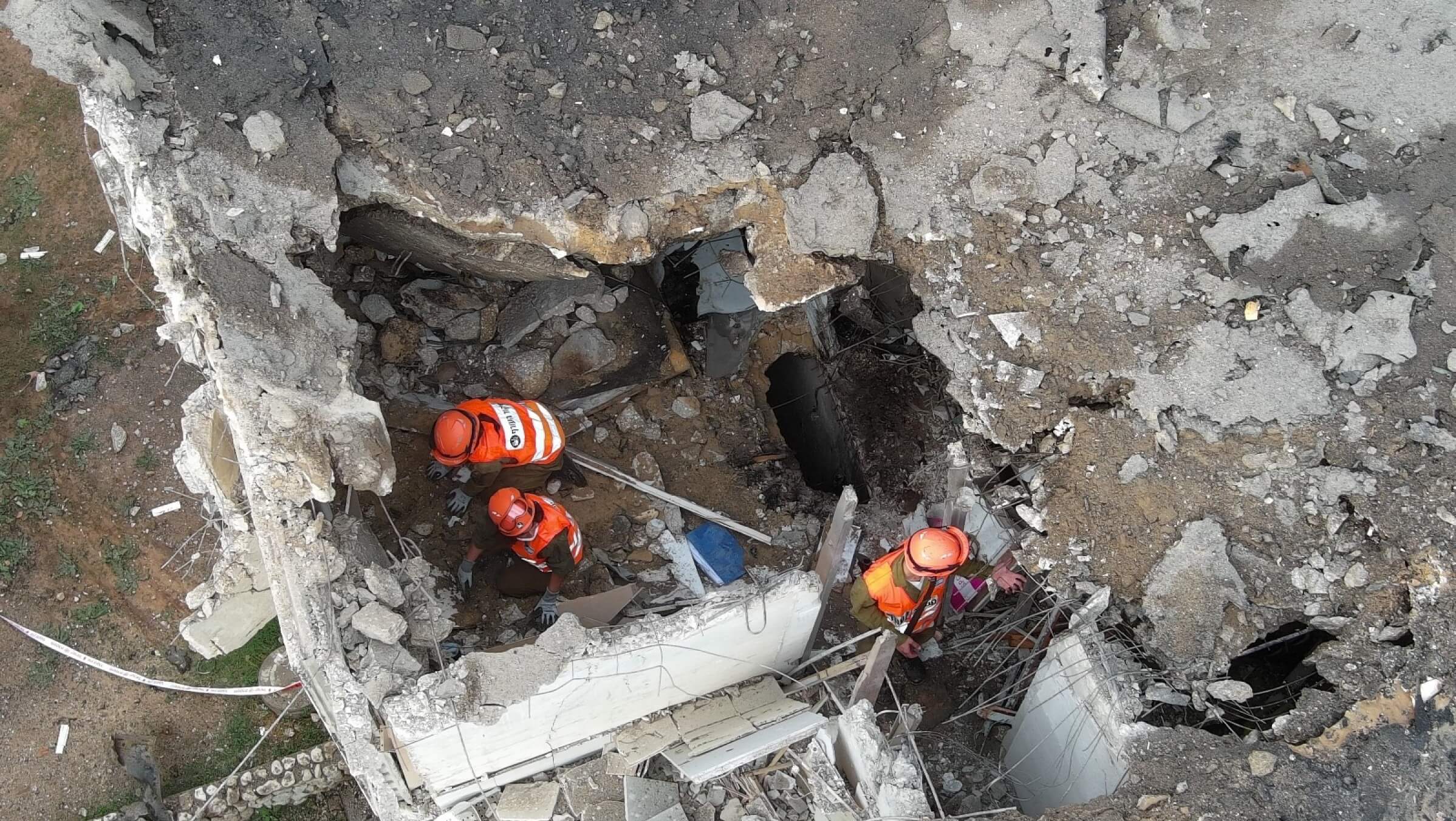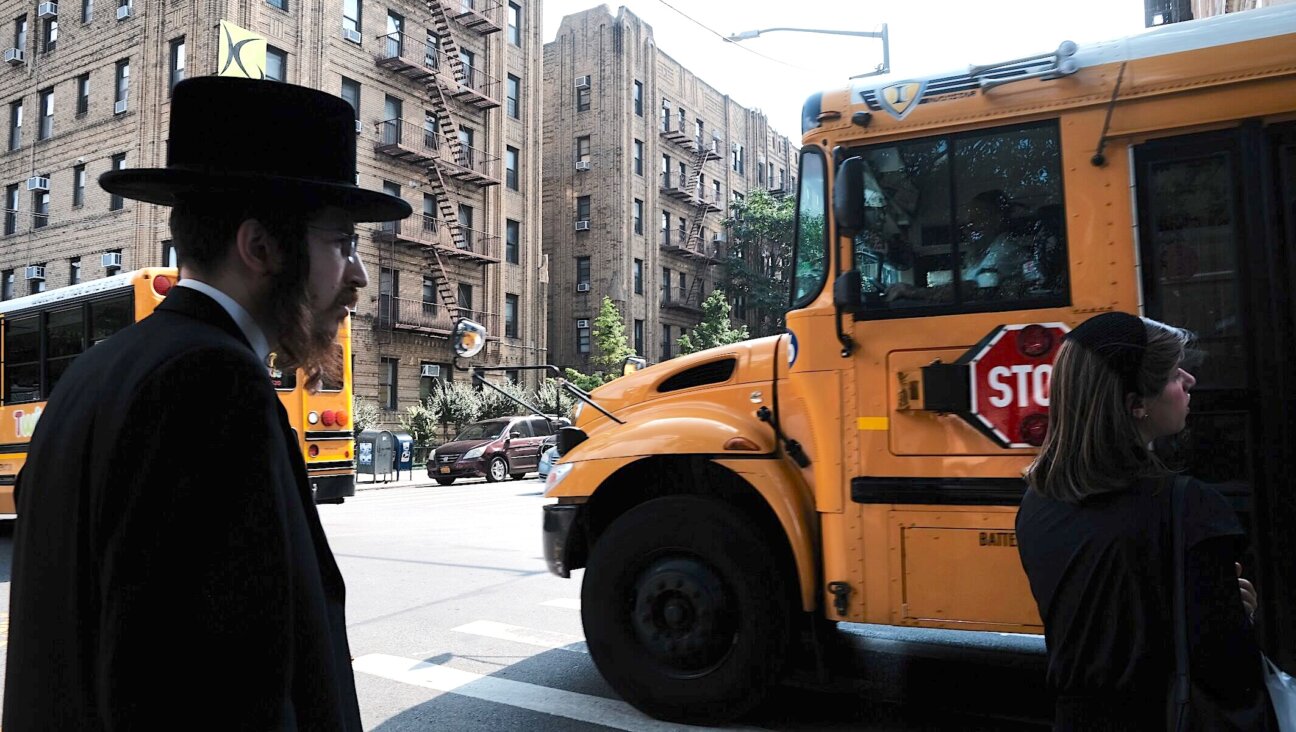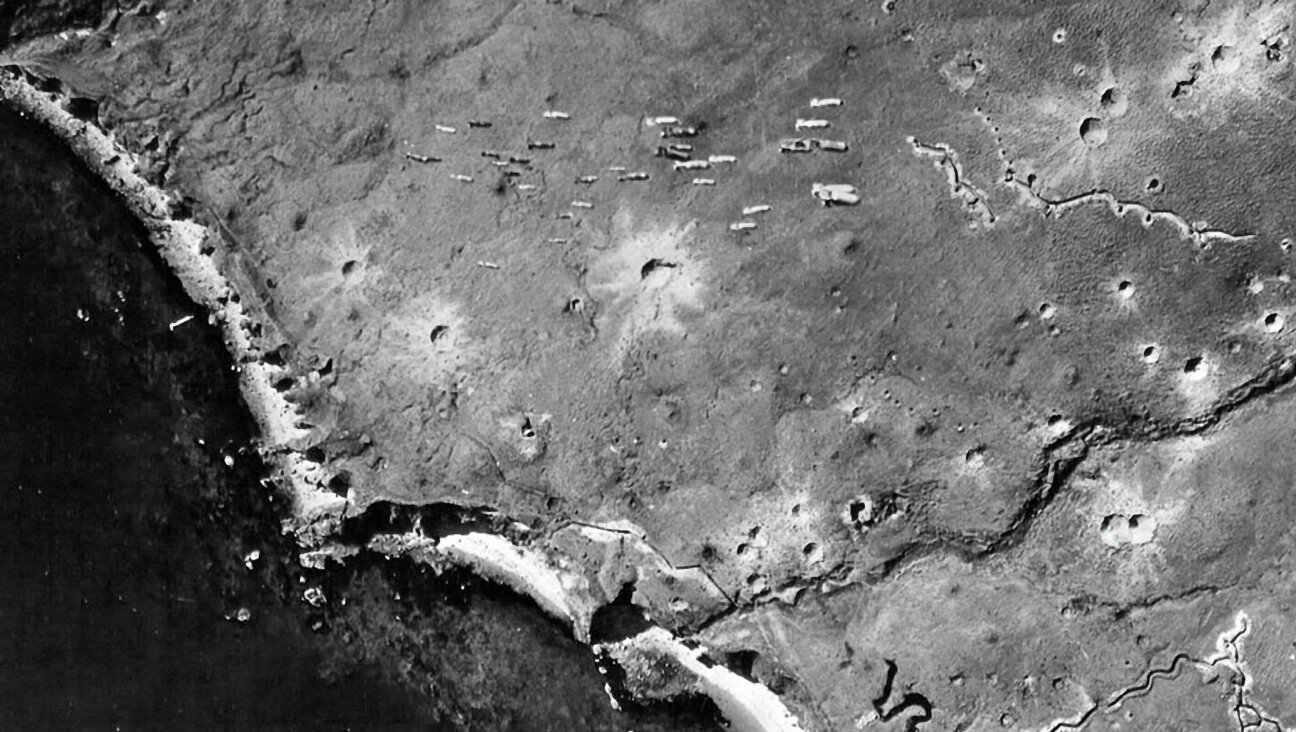Amid war, 1,000 Israeli civilians form the National Drone Patrol
Hobbyists and commercial drone company workers have volunteered to boost civil defense

Graphic by Angelie Zaslavsky
TEL AVIV — When Hamas attacked Israel on Oct. 7, Nevo Ozer was on vacation in the Philippines using his personal drone to capture stunning overhead images of long stretches of white sandy beach.
Seven weeks later, the management consultant is using the same drone to help civil defense efforts in his home city of Givatayim, just east of Tel Aviv. He’s also working beyond Givatayim, with the Israel Defense Forces’ Home Front Command.
Ozer, 31, is part of a small army of civilians who are taking photos and streaming video from above, giving both municipal and military leaders views they might not otherwise have.

“Drones are ideal for this,” he said.
Some 200 of Ozer’s neighbors in Givatayim responded to a callout for volunteer drone operators (only 10 have been chosen so far). And Givatayim’s is only one of about 80 units that now make up Israel’s National Drone Patrol — a force of 1,000 volunteers, both hobbyists and commercial drone industry employees.
Sign-up nation
The drone patrols are among a myriad of new ways that Israelis are volunteering since Oct. 7. A Hebrew University analysis published Nov. 2 estimated that nearly half the population has stepped up to support the war and recovery effort, filling holes in the country’s defenses and economy.
“You have a problem and then you need to figure out how you can solve the problem,” Ozer said.
The biggest group of volunteers packaged food and supplies for evacuated families and deployed soldiers, according to the study. The second-largest signed up for civil defense — including the drone patrols.
In recent weeks, volunteer drone operators helped survey damage after a rocket from Gaza struck parked cars in the city of Kiryat Ono, near Tel Aviv. They scanned for trapped residents on the top floor of an apartment building in central Israel hit by another rocket. And they assisted Israel’s Home Front Command during a training in which first responders practiced rescuing each other from rubble.
A bird’s-eye view of the protest movement
The drone patrol network has its roots in the protest movement against the government’s proposed judicial overhaul, which brought tens and sometimes hundreds of thousands of Israelis into the streets each week in the months before the Oct. 7 attack. About 100 drone operators documented the rallies with aerial photos.
Artist and photographer Oren Alon, 52, was praised earlier this year for his work during the protests by the judges at a prestigious international competition for drone photography. More recently, he demonstrated his drone’s capabilities in Tel Aviv’s “situation room” to the city’s emergency response team shortly after Hamas’ attack. As Alon flew his drone over an apartment building that had been hit by a rocket on Oct. 7, the team watched its real-time video.
Since then, Alon and other drone patrol volunteers have given about 20 such presentations in cities across Israel and to the Home Front Command. The municipalities help recruit volunteers, who are screened and selected by drone patrol leaders. Civil and military leaders may press them into service day or night.
“When a need arises from the ground, they just call us,” Ozer said. “We jump.”
The recruits are eager because, Alon said, the work hits close to home.
“You can be involved in your own security,” he said.
‘Crazy gear’
The drone network is citizen-run, and is struggling to absorb the wave of volunteers. “I probably don’t know at least 50% of the people,” said Alon.
Ozer said he chose Givatayim’s 10 drone team members carefully. He needed to know whether they were licensed, had experience flying more sophisticated drones and were fine putting their equipment — which typically costs thousands of dollars — at risk.
He said some members own “crazy gear” — which, in drone speak, refers to advanced features like thermal cameras and night vision. Together, he said, the Givatayim squad has “almost military-grade capabilities.”
In one example shared by both Alon and Ozer, a fellow drone operator was called on to help search for four Palestinians suspected of being in Israel without permits, near the southern Israeli town of Meitar, which borders the West Bank. The drone’s footage helped local security forces locate and apprehend the four men, who were fleeing from the army. According to the town’s spokesperson, who confirmed the incident, no weapons were found on the men and they were taken into police custody.
“The police understand that we can help them survey,” Ozer said, “and we understand that the police can make the arrest at the end of the day.”
Alon said he has heard some Israelis express concern about the increased use of drones during war, when it can be hard to distinguish between drones operated by friendly and hostile forces.
The line between a helpful drone and a threatening one can be blurry, he acknowledged.
But he said he’s still “immensely” satisfied with the drone patrol’s performance.
“You are providing capabilities that are literally life-saving,” he said.
Correction: An earlier version of this story misspelled the last name of Nevo Ozer as Ofer.






















